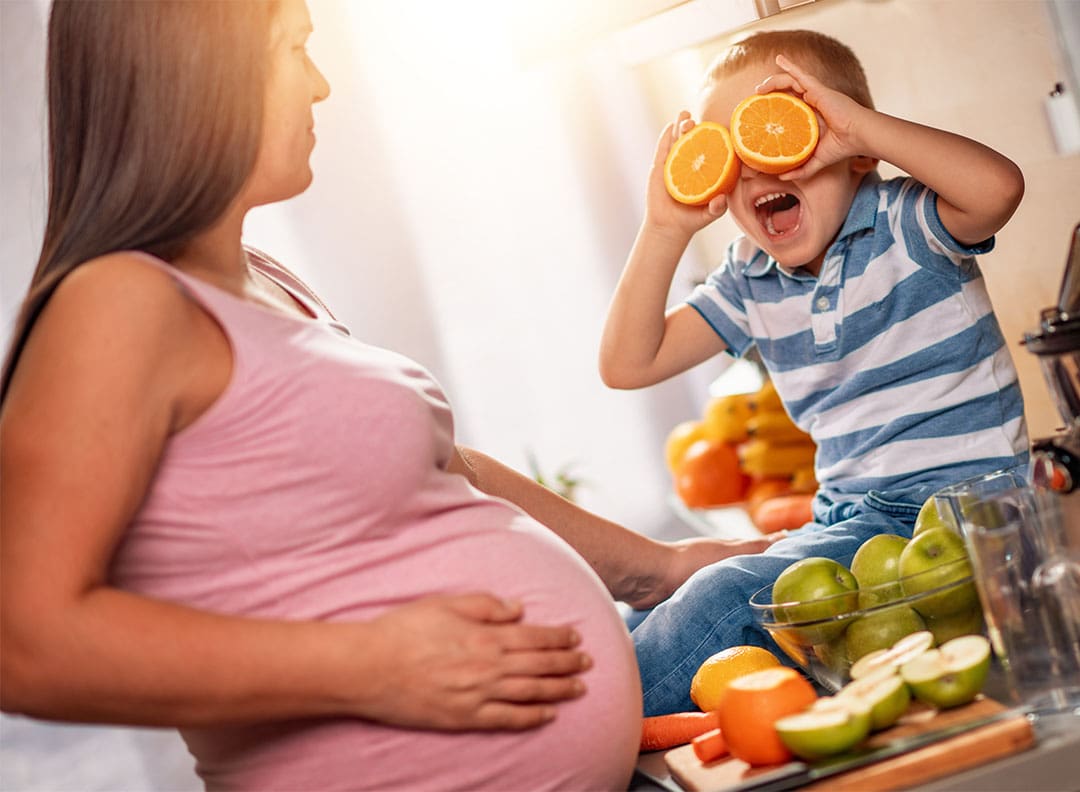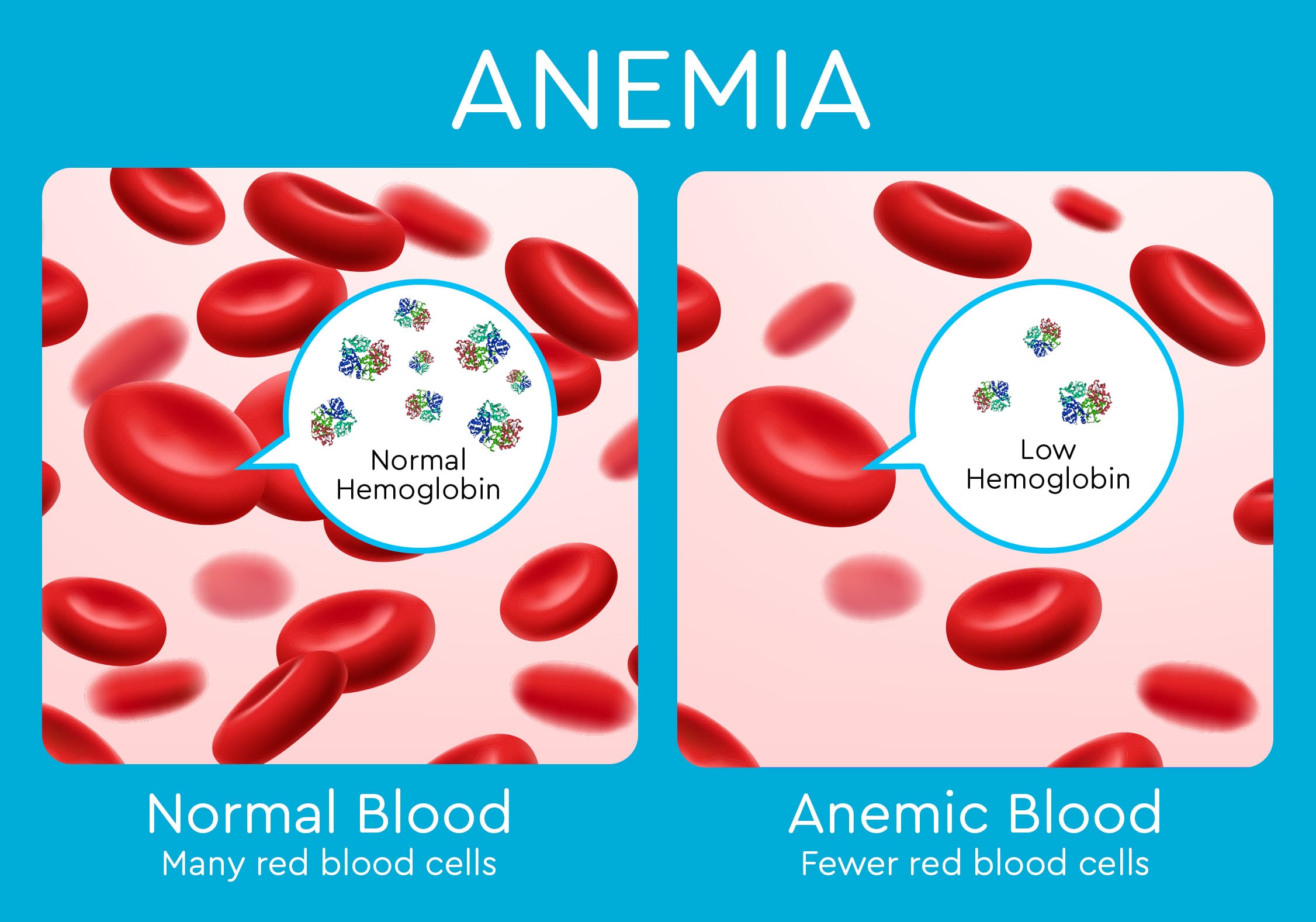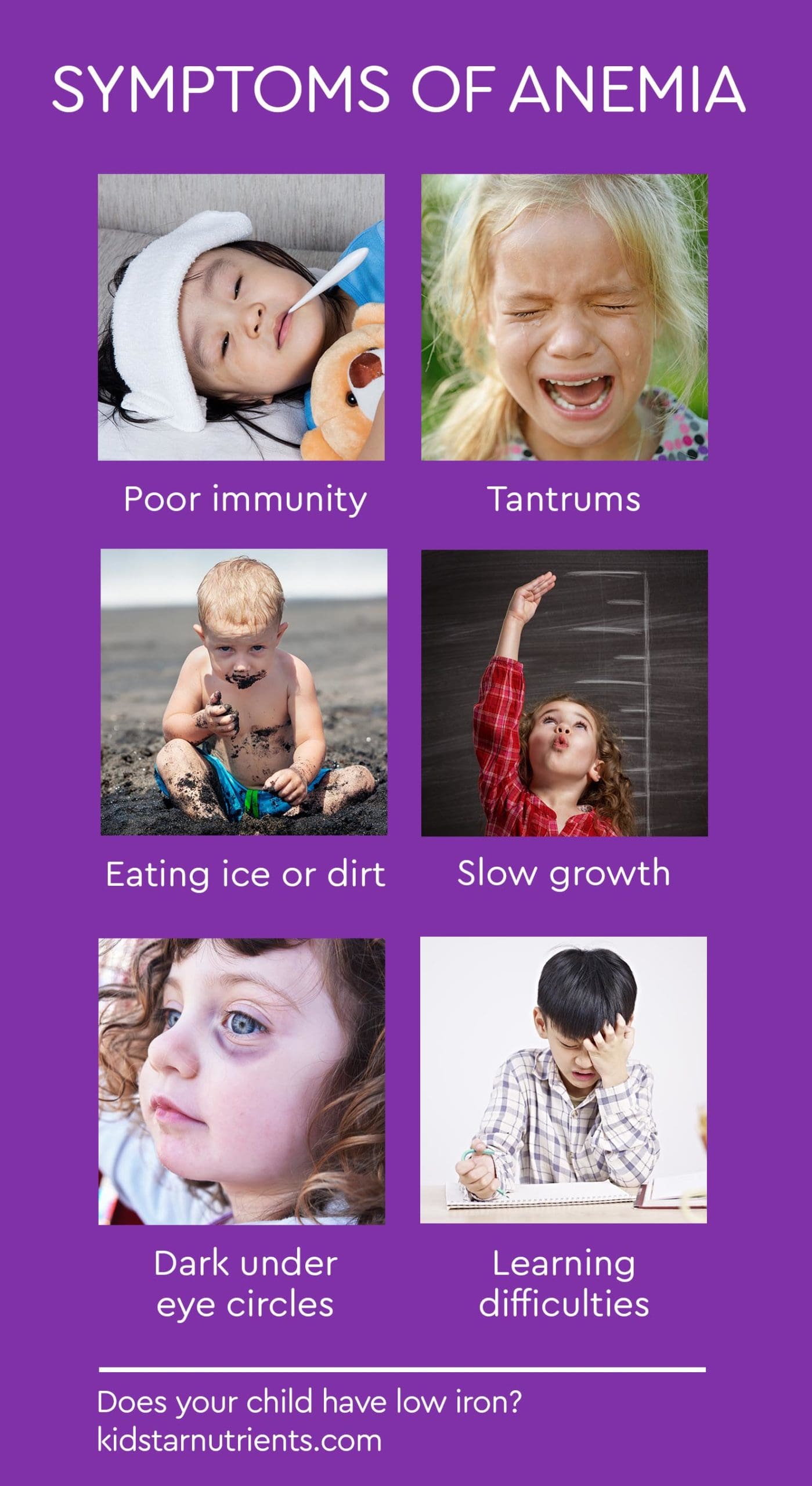Iron Needs from Pregnancy to Teens

By Rhianna Ross, RHN
Iron is essential to many important functions in the body from the manufacture of hormones to supplying the body with energy and oxygen to growth and development.
During times of growth (pregnancy, growing children, athletes) iron needs increase. Without enough iron, growth is delayed, and developmental abnormalities can occur such as impaired brain development in children. The negative impact low iron has on health can have lasting-effects.
Iron deficiency is the most common nutrient deficiency worldwide, with pregnant women and young children at the greatest risk. Iron deficiency can occur at any stage of life if enough iron is not consumed daily. We should be eating 20 mg of iron in our diet, but the latest research shows we are getting around 8 mg per day.
Iron deficiency anemia occurs when the body’s iron stores, known as ferritin, are not high enough to make adequate amounts of hemoglobin, an iron-rich protein. Or when enough healthy red blood cells aren’t available to deliver enough oxygen to the cells of the body.

Iron deficiency anemia occurs gradually.
Iron depletion occurs first. Iron is stored as ferritin. When ferritin stores begin to drop the body struggles to maintain hemoglobin at healthy levels.
Iron deficiency eventually develops when ferritin stores are exhausted and hemoglobin levels start to fall.
Iron deficiency anemia is diagnosed when you no longer have enough hemoglobin in your blood cells. When hemoglobin blood levels drop the body can no longer carry enough oxygen to the body’s tissues. Ferritin is further depleted.
Iron Deficiency in Pregnancy
A woman’s iron needs greatly increase during pregnancy. Having optimal iron stores before becoming pregnant is best to reduce the risk of miscarriage and infertility. Keeping stores of iron up during pregnancy is essential for baby’s optimal growth and development.
During pregnancy, a woman’s blood volume increases. If there is a lack of iron, blood supply going to the baby may be reduced.
Iron deficiency anemia that goes untreated during pregnancy can lead to:
- Miscarriage
- Low birth weight
- Premature birth
- Increased risk of anemia in baby
- Stunted mental development in baby
The following can lead to anemia during pregnancy:
- A diet low in iron-containing foods
- Poor digestion or conditions that affect the digestive tract (colitis, Crohn’s Disease, celiac disease)
- Heavy menstrual periods before getting pregnant
- Reduced appetite or vomiting due to morning sickness
- Having multiple pregnancies close together
- Being pregnant with two or more babies
- Being a vegetarian or vegan
- Becoming pregnant before the age of 20
Pregnant women require 30 mg of iron daily. Iron-rich foods and supplementation are recommended for women who are wishing to become pregnant or those who are pregnant.
Symptoms of low iron in women are:
- Cravings for dirt and ice
- Fatigue
- Hair loss
- Pale skin
- Dark under-eye circles
- Infertility
- Restless legs
- Shortness of breath
Iron Deficiency Anemia in Babies and Children
Iron is essential for a child’s developing brain and growing body. An iron deficiency that is not treated quickly may have negative health effects which may persist even after the iron deficiency anemia is addressed.
Iron and Newborns (0 to 2 months)
A full-term baby should be born with enough iron stores for the first six months after birth. After six months of age your health care provider will most likely recommend your child take an iron supplement.
There are many factors that may lead to iron deficiency or iron deficiency anemia in newborns.
Causes of iron deficiency in newborns are:
- Premature birth
- Being born to a mother who had iron-deficiency anemia
- Blood loss during birth
- Being born after in quick succession after a sibling; women who wait less than two years before becoming pregnant again are at an increased risk of being nutrient deficient and of having a baby with deficiencies
- Deficiencies in folate/folic acid or vitamin E which are nutrients needed to create new red blood cells
- Red blood cells breaking down faster than they are made, common in babies that have a different blood type than their mother
- Vitamin K deficiency, which can increase the chances of bleeding and anemia in newborns
One way of helping to ensure optimal iron levels at birth is delaying umbilical cord clamping after birth. This allows blood flow between the placenta and the newborn to continue.

Iron and Infants (2 to 12 months)
Breastfeeding is best because iron in breastmilk is easily absorbed. Despite the multiple benefits of breastfeeding, breastmilk is low in iron. For babies who are born deficient, breastmilk alone will not bring up their iron stores and an iron supplement is necessary.
Risks factors that increase the chances of iron deficiency and anemia:
- Babies formula fed with a ‘low-iron’ formula
- Babies exclusively breastfed past six months; breastmilk does not contain enough iron to keep up with baby’s needs after six months
- Babies given cow’s milk before the age of 12 months; cow’s milk interferes with iron absorption
- Not addressing low iron quickly with iron supplementation
After six months of age, it is important to start introducing iron-containing foods to your baby.
Low Iron in Toddlers and Older Children (1 to 9 years)
Young children typically go through a picky eating phase and may be underweight. Multiple nutrient deficiencies can result, including low iron or other nutrients needed for iron absorption and regulation such as vitamins C and A.
Children who are overweight are also at an increased risk of becoming iron deficient. Hepcidin, a hormone that regulates iron in the body, is found in higher levels in children and adults who are obese. Higher levels of hepcidin can block the uptake of iron into red blood cells.
In addition to not eating enough iron-containing foods, low iron can occur due to:
- Too much dairy intake; calcium in dairy hinders the absorption of iron and increases the risk of deficiency
- Increased activity levels; athletic or active children have greater needs
- Chronic digestive issues such as diarrhea
Low Iron in Pre-Teens and Adolescence (10 to 18 years)
Puberty is a time of rapid development and increased iron needs.
Poor diet is a leading cause of iron deficiency as preteens and teenagers start eating out of the house more often, exploring their dietary preferences, and making their own food choices.
Risk factors for this age group include:
- Becoming vegetarian or vegan. It is difficult to ensure nutritional needs are being met on these diets.
- Poor food choices (junk food, processed foods)
- Caffeine intake, which hinders iron absorption
- The start of menstruation and heavy menstruation in girls. It can be difficult or impossible for girls to make up their monthly iron losses through food alone.
If your child does embark on a new way of eating such as veganism, provide resources in the form of books or websites from trusted sources to help them understand their nutritional needs.
Low Iron, What’s Next?
Iron deficiency can be corrected. Increasing iron levels before anemia occurs is key to avoiding ill health effects.
Steps a parent can take if low iron is suspected in their child include the following.
Testing
Be sure the doctor tests for both ferritin levels as well as hemoglobin and that you ask to see the results. Many doctors will say results are normal because they are within range, however current ranges are too broad for optimal health. The lower the level, even when within the normal range, the greater the likeliness of iron deficiency.
Because the ranges for iron in children are all over the map look at your child’s symptoms as well.
An example of normal ferritin lab ranges:
- 25 to 200 ng/mL for newborns
- 200 to 600 ng/mL at 1 month old
- 50 to 200 ng/mL at 2 to 5 months old
- 12 to 140 ng/mL for children 6 months to 15 years
Most Common Symptoms of Low Iron
- Behavioural problems, frequent tantrums, and melt downs
- Pale skin and dark under eye circles
- Poor grades, learning difficulties
- Hard time falling asleep and waking up
- Frequently sick
- Craving/eating ice or dirt
Diet
There are two forms of iron in food: heme and non-heme. Heme iron sources are easier to absorb. Heme iron is found in chicken, beef, egg yolks, pork, shellfish, as well as other animal meats and seafood.
Non-heme iron is found in plant foods like legumes, nuts, seeds, and dark green leafy vegetables. This form of iron is not as easily absorbed because plant foods contain substances such as tannins and phytic acids, which can reduce the absorption of iron. Vegans and vegetarians are at a higher risk of iron deficiencies because they do not consume animal-based products.
Calcium blocks the absorption of both heme and non-heme iron. Examples of foods that are high in calcium are milk, cheese, yogurt, fortified milk substitutes, and nuts. To increase the absorption of iron from foods do not serve foods high in calcium at the same time as high iron foods.
Did You Know?
Children who drink milk are at an increased risk of iron deficiency. Doctors do not recommend that cow’s milk be given to children under 12 months of age because calcium blocks iron absorption.
Vitamin C increases the absorption of iron. Include high vitamin C foods in your child’s diet, such as bell peppers, broccoli, strawberries, or citrus fruits with meals.
Iron Mineral Supplements
It can be very hard to correct an iron deficiency through diet alone. If your child is diagnosed with iron deficiency or iron-deficiency anemia, supplementation is necessary to raise iron levels.
Supplementing with iron is especially important for picky eaters or kids who avoid meats.
While heme iron is the easiest to absorb from food, it is difficult to use heme iron in supplement form as it is sourced from animal blood.
The majority of iron supplements on the market have inferior forms of iron that are not well absorbed and cause side effects such as constipation, diarrhea, nausea, intestinal pain, and black stools. Black stool is a sign of unabsorbed iron, which irritates the digestive tract.
Visit your doctor if you have tar-like black stool which is a serious sign of bleeding in the digestive tract.
When iron supplements come in contact with teeth, they can cause discoloration or graying of the teeth. None of these side effects occur with KidStar® BioFe® Iron.
KidStar® BioFe® Iron
KidStar® BioFe® is gentle and will not upset sensitive stomachs or stain teeth like common iron supplements.
The iron in BioFe® is micronized and microencapsulated, protecting you from the side effects of iron, like constipation, black stools, tummy upset, and grey teeth. Microencapsulation also allows BioFe® iron to be taken at the same time as foods and nutrients containing calcium.
KidStar® BioFe® Iron is available in a tasty liquid, unflavoured liquid drops, and a tiny chewable tablet. Like all KidStar® nutrients, our iron supplements do not contain sugar, artificial colours, artificial sweeteners and artificial flavours, soy, gluten and GMOs.
![]()
Daily Iron Requirements
To prevent iron deficiency, iron supplement should provide the following dose:
- Children 7 months to 13 years – 10 mg elemental iron daily
- Girls 14 to 18 years – 15 mg elemental iron daily
- Boys 14 to 18 years – 10 mg elemental iron daily
- Pregnant women – 30 mg elemental iron daily
For children diagnosed with iron deficiency anemia, consult a health care practitioner about a therapeutic dose to treat iron deficiency.
Quick Tips to Increase Iron
- Serve foods rich in vitamin C (fruits and vegetables) at the same time as foods containing iron
- Increase heme-iron containing foods such as organic egg yolks, organic chicken livers, grass-fed beef
- Vegetarians should soak legumes, grains, nuts, and seeds to help remove phytic acid, which hinders iron absorption
- Use cast iron pans for cooking to increase iron; they impart iron into the food when cooking
- Cook with the Lucky Iron Fish Cooking Tool
- Avoid high calcium foods when consuming high iron foods
- Avoid dairy products if deficient in iron
- Avoid caffeine-containing foods when eating iron (chocolate, tea, sodas)
- Supplement with BioFe™ Iron to help prevent iron deficiency and iron deficiency anemia
Find iron products here
Iron Plus Bundle
Iron Plus Bundle
$71.81
(Save 15%)
Easy on the stomach, delicious, tiny chewable iron tablet.
BioFe® Pure Iron Chewables
Price range: $18.99 through $35.99
Gentle, delicious, iron liquid formula for toddlers, children, and older.
BioFe+® Iron Liquid
$36.50

About the Author
Rhianna Ross, R.H.N., is a registered holistic nutritionist based in Vancouver, BC. Rhianna has more than a decade of experience in the natural health and wellness industry, and currently works at KidStar Nutrients, where she enjoys reviewing and analyzing the latest nutritional research papers, meta-analyses, and journal articles.
